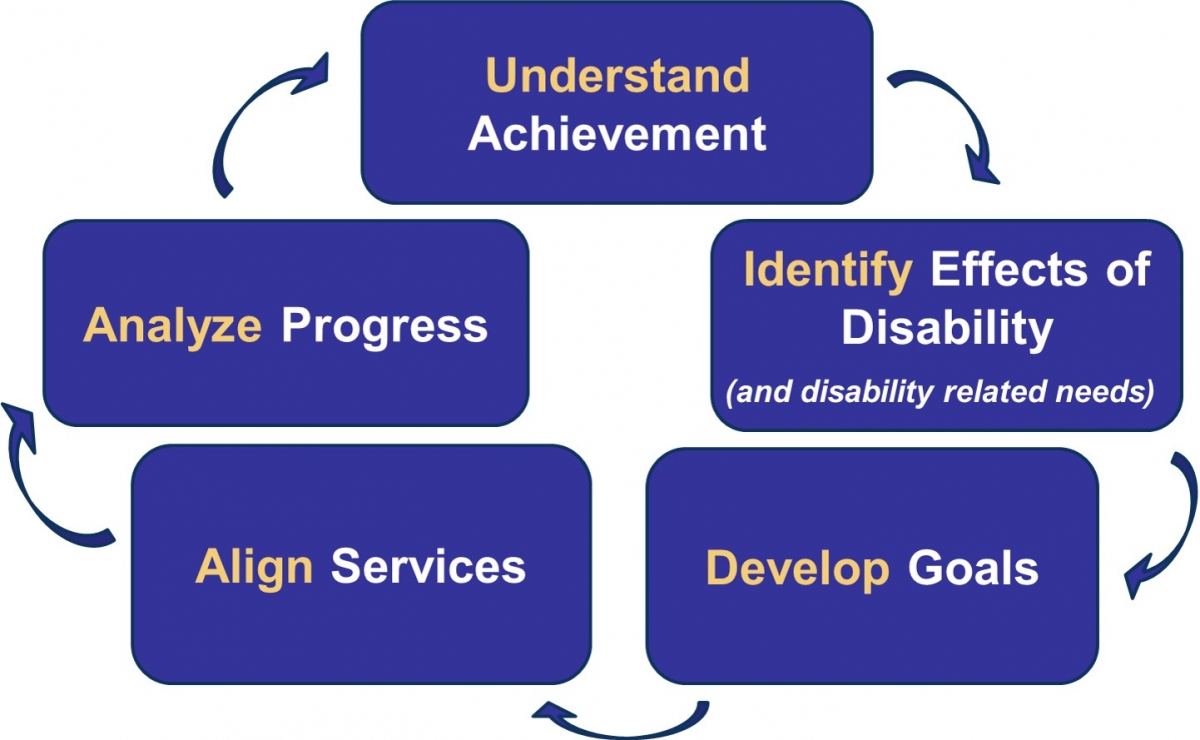CCR IEP Steps At a Glance: Steps 1-5 Packet
CCR IEP 5 Step Process Handout
CCR IEP 5 Step Process Chart - Word Version
Step 1 - Understand Achievement
Understand achievement of grade-level academic standards and functional expectations to identify the student's strengths and needs.
Step 2 - Identify Effect of Disability and Summarize Needs
Identify how the student's disability affects academic achievement and functional performance, and summarize disability-related needs.
Step 3 - Develop Goals
Develop ambitious and achievable goals that close achievement gaps and support the unique strengths and needs of the student.
Step 4 - Align Services
Align specially designed instruction, services, supports, and accommodations needed to support the goals and ensure access to the general curriculum.
Step 5 - Analyze Progress
Analyze progress towards goals to evaluate what works and what is needed to close the student's achievement gaps.
Resources for All 5 Steps
OSERS Policy Guidance on Free Appropriate Public Education (FAPE) Dear Colleague Letter, November 16, 2015
OSERS Policy Guidance on Ensuring Equity and Providing Behavioral Supports to Students with IEPs Dear Colleague Letter, August 1, 2016
OSERS Guidance Preschool Least Restrictive Environments (LRE) Dear Colleague Letter, January 9, 2017
More information about DPI Sample CCR IEP Forms
CCR IEP training and technical assistance supports compliance with procedural requirements and improved outcomes for students with disabilities. A CCR IEP Checklist has been developed for use as a resource when reviewing IEPs during CCR IEP training and technical assistance. The CCR IEP Checklist is aligned with the I-4 Linking Form and includes additional prompts for consideration. Districts are encouraged to use the checklist when training staff, parents and students to develop IEPs that promote improved outcomes for students. Districts will also benefit from reviewing IEPs using the CCR IEP Checklist in preparation for participation in their Reading Drives Achievement: Procedural Compliance Self-Assessment (RDA: PCSA).
A Guide to Implementing IEPs and Monitoring Progress of IEP Goals When Moving Between In-Person, Hybrid, or Virtual Learning Environments
The WI DPI special education team has published a guide to assist IEP teams with a process for reviewing IEPs when a student receiving special education services through an IEP moves from in-person to a virtual or hybrid learning environment. The guide emphasizes a thorough review of a student’s disability-related needs, IEP goals, IEP services, and measures used to monitor progress of IEP goals to ensure the student continues to receive a Free and Appropriate Public Education (FAPE). The guide also provides extensive appendix and resources related to virtual monitoring of progress on IEP goals.
